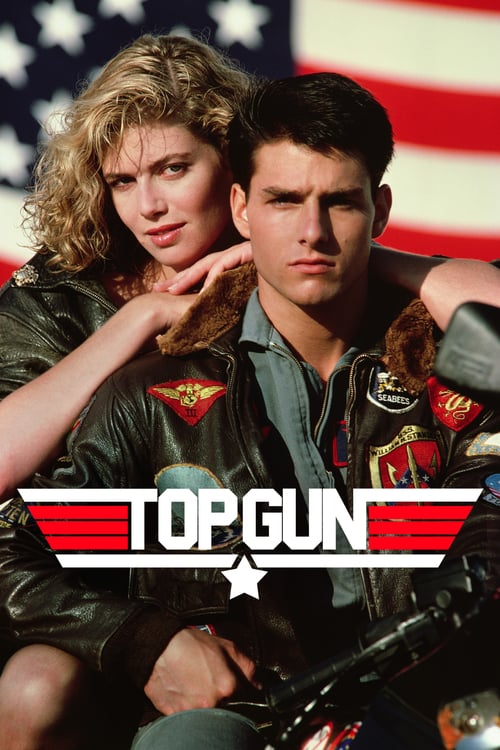Oh, where to even begin with Top Gun?
First released in 1986, Top Gun is a film that pretty much epitomizes a certain style of filmmaking. Before I wrote this review, I did a little research and I actually read some of the reviews that were published when Top Gun first came out. Though it may be a considered a classic today, critics in 1986 didn’t care much for it. The most common complaint was that the story was trite and predictable. The film’s reliance on style over substance led to many critics complaining that the film was basically just a two-hour music video. Some of the more left-wing critics complained that Top Gun was essentially just an expensive commercial for the military industrial complex. Director Oliver Stone, who released the antiwar Platoon the same year as Top Gun, said in an interview with People magazine that the message of Top Gun was, “If I start a war, I’ll get a girlfriend.”
Oliver Stone was not necessarily wrong about that. The film, as we all know, stars Tom Cruise as Pete “Maverick” Mitchell, a cocky young Navy flyer who attends the TOPGUN Academy, where he competes with Iceman (Val Kilmer) for the title of Top Gun and where he also spends a lot of time joking around with everyone’s favorite (and most obviously doomed) character, Goose (Anthony Edwards). Maverick does get a girlfriend, Charlie (Kelly McGillis), but only after he’s had plenty of chances to show both how reckless and how skilled he can be while flying in a fighter plane. Though the majority of the film is taken up with scenes of training and volleyball, the end of the film does give Maverick a chance to prove himself in combat when he and Iceman end up fighting a group of ill-defined enemies for ill-defined reasons. It may not be an official war but it’s close enough.
That said, I think Oliver Stone was wrong about one key thing. Maverick doesn’t get a girlfriend because he started a war. He gets a girlfriend because he won a war. Top Gun is all about winning. Maverick and Iceman are two of the most absurdly competitive characters in film history and, as I watched the film last weekend, it was really hard not to laugh at just how much Cruise and Kilmer got into playing those two roles. Iceman and Maverick can’t even greet each other without it becoming a competition over who gave the best “hello.” By the time the two of them are facing each other in a totally savage beach volleyball match, it’s hard to look at either one of them without laughing. And yet, regardless of how over-the-top it may be, you can’t help but get caught up in their rivalry. Cruise and Kilmer are both at their most charismatic in Top Gun and watching the two of them when they were both young and fighting to steal each and every scene, it doesn’t matter that both of them would later become somewhat controversial for their off-screen personalities. What matters, when you watch Top Gun, is that they’re both obviously stars.
“I’ve got the need for speed,” Tom Cruise and Anthony Edwards say as they walk away from their plane. The same thing could be said about the entire movie. Top Gun doesn’t waste any time getting to the good stuff. We know that Maverick is cocky and has father issues because he’s played by Tom Cruise and Tom Cruise always plays cocky characters who have father issues. We know that Iceman is arrogant because he’s played by Val Kilmer. We know that Goose is goofy because his nickname is Goose and he’s married to Meg Ryan. The film doesn’t waste much time on exploring why its characters are the way they are. Instead, it just accepts them for being the paper-thin characters that they are. The film understands that the the most important thing is to get them into their jets and sends them into the sky. Does it matter that it’s sometimes confusing to keep track of who is chasing who? Not at all. The planes are sleek and loud. The men flying them are sexy and dangerous. The music never stops and the sun never goes down unless the film needs a soulful shot of Maverick deep in thought. We’ve all got the need for speed.
In so many ways, Top Gun is a silly film but, to its credit, it also doesn’t make any apologies for being silly. Instead, Top Gun embraces its hyperkinetic and flashy style. That’s why critics lambasted it in 1986 and that’s why we all love it in 2020. And if the pilots of Top Gun do start a war — well, it happens. I mean, it’s Maverick and Iceman! How can you hold it against them? When you watch them fly those planes, you know that even if they start World War III, it’ll be worth it. If the world’s going to end, Maverick’s the one we want to end it.

